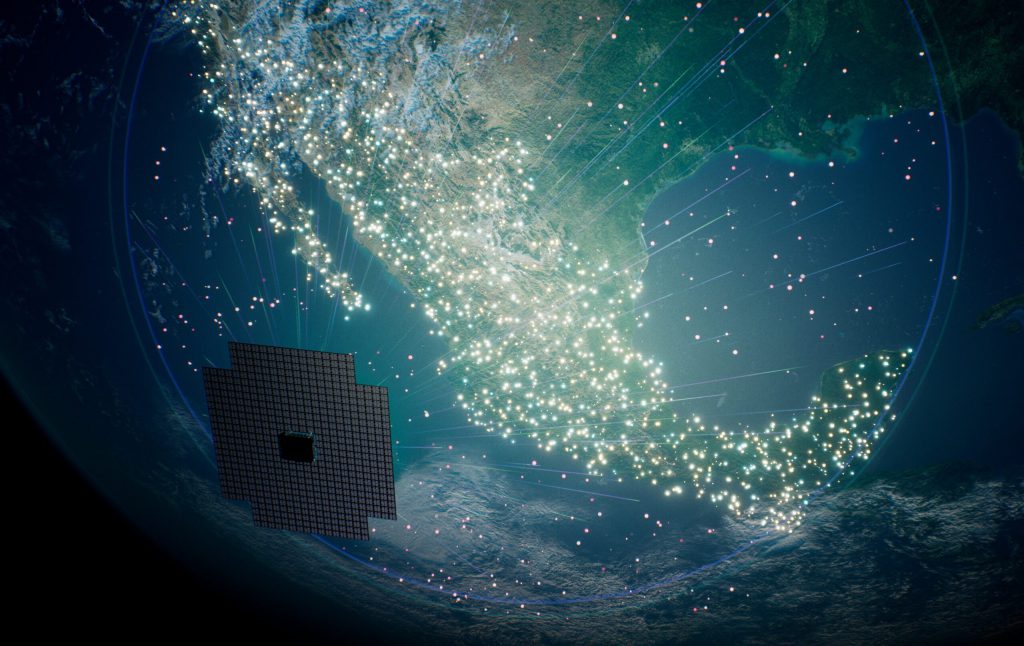
AST SpaceMobile books more SpaceX rides months after canceling Soyuz reservation (Image Credit: Space News)
TAMPA, Fla. — AST SpaceMobile is expanding a launch deal with SpaceX for its cellphone-compatible broadband constellation, following a 2021 decision to move its upcoming BlueWalker-3 prototype mission from Russia’s now-embargoed Soyuz to a Falcon 9.
BlueWalker-3 was booked on a Soyuz as a secondary payload but moved its reservation to Falcon 9 last August after Russia’s primary customer for the launch ran into delays, AST SpaceMobile chief strategy officer Scott Wisniewski told SpaceNews.
Wisniewski said BlueWalker-3 is slated to fly with SpaceX “this summer” with other undisclosed passengers, while the primary payload for AST SpaceMobile’s canceled Soyuz reservation has yet to launch.
He declined to disclose the primary payload but said it was for a “non-Russian mission,” likely making it one of more than a dozen non-Russian satellite missions that have been left seeking Soyuz alternatives following Russia’s invasion of Ukraine.
“We’re happy to be launching out of the U.S. [and that] we took the proactive step to switch” launch vehicles, Wisniewski said.
Multi-launch deal
AST SpaceMobile, one of several space companies to go public last year via a SPAC merger, announced a multi-launch contract March 8 with SpaceX worth $22.75 million.
The deal covers undisclosed technical launch changes for BlueWalker-3, a milestone payment for the first operational BlueBird satellite slated to launch in the fourth quarter of this year, and a reservation for an additional BlueBird mission.
According to AST SpaceMobile, the company can provide initial services with 20 satellites that it expects to have deployed during the first two or three quarters of 2023.
“We expect to achieve full global broadband coverage with 110 satellites, but we expect to be able to provide other commercial services in the equatorial region with only 20 satellites — this is a region with 49 countries and 1.6 billion people,” Wisniewski said.
Assuming the first phase completes within the time frame, AST SpaceMobile has said it plans to start launching the additional 90 satellites “during the last quarter of 2023 and continue during 2024.”
Operating at full capacity, Wisniewski said the company plans “to assemble up to six BlueBird satellites per month” from its Texas manufacturing facilities.
While AST SpaceMobile is not disclosing BlueBird’s mass, Wisniewski said each satellite “is the size of a big truck” and “well north” of BlueWalker-3 at around 1,500-kilograms.
He said the two BlueBird satellites in AST SpaceMobile’s contract with SpaceX don’t require dedicated launches. AST SpaceMobile said it picked a Falcon 9 for the first BlueBird but has not specified a SpaceX launch vehicle for the additional satellite, meaning Falcon Heavy or Starship could also be possibilities.
“We’re intending to be compatible with the Falcon 9 as well as other industry vehicles [and] future industry vehicles,” Wisniewski said.
The company is still waiting for the Federal Communications Commission to grant an experimental license for testing BlueWalker-3 services in the United States, after receiving similar licenses in certain other countries.
AST SpaceMobile has also not yet obtained an FCC market access license to provide BlueBird services to customers in the U.S.
In its latest update, the company said as of Sept. 30 it had market access licenses in six countries, covering a population of about 360 million.
Virginia-based Lynk Global is also developing a constellation to connect standard smartphones and plans to deploy its first operational satellite with SpaceX in April, according to the company’s vice president of government affairs Tony DeTora.
He said Lynk Global is awaiting an FCC license to provide initial services that include text messaging and emergency alerts with a total of 10 operational satellites, which aim to be deployed 12-15 months after the first operational satellite is launched.
Lynk Global announced Feb. 8 that thousands of devices had connected to its fifth demonstration satellite during pre-commercial tests.








